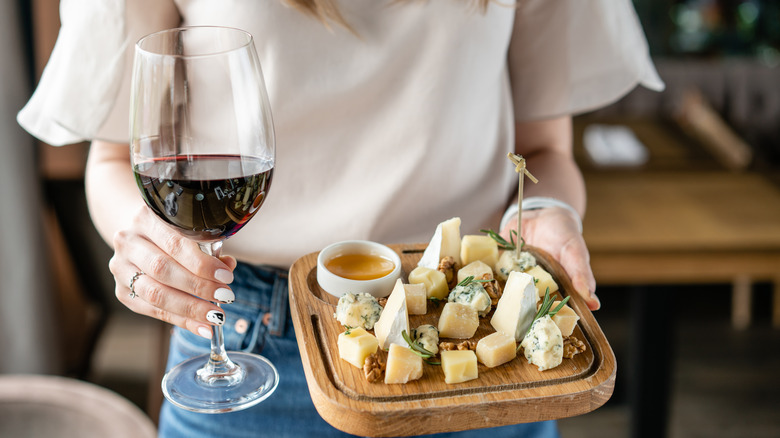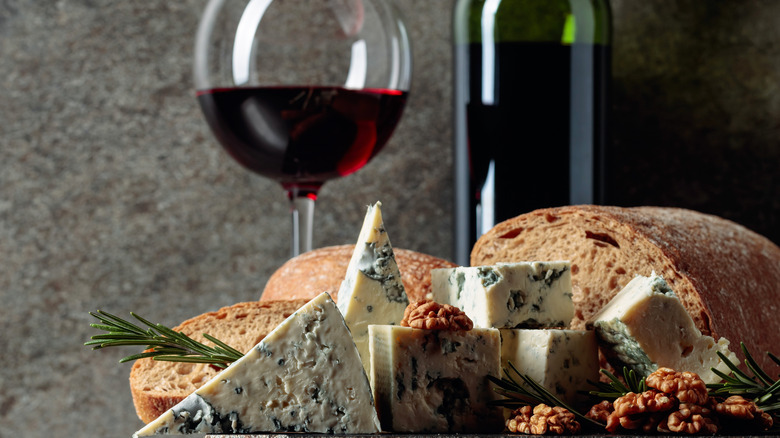The Absolute Best Type Of Wine To Pair With Blue Cheese
Blue cheese goes back — way back — to the 7th century when, as legend has it, a preoccupied shepherd forgot his packed bread and cheese in a cave. When he returned months later to retrieve the forlorn lunch, the cheese was covered in mold. The offending mold is now understood to be penicillium roqueforti and is used to make blue cheese; the culture is blended into milk, and the cheese is left to age for several months (per Castello cheese).
Creamy, crumbly, sharp, or mild, the appearance and taste of blue cheese can vary; think Gorgonzola, Roquefort, and Stilton. Admittedly, veiny-looking cheeses aren't for everyone, and the smell and taste can be pungent. But when served alongside crackers or fruit, blue cheese can make a satisfying snack, appetizer, or after-dinner treat.
If you're looking to pair this family of cheese with the perfect wine, we have some suggestions.
Go dark or go home
Most blue cheese varieties are sharp and salty to taste — an ideal canvas to match with a vintage Port, explains Certified Specialist of Wine and Tasting Table writer Lucia Capretti. With notes of chocolate, spice, berries, and nuts, vintage Port is a bold beverage that can hold its own when set beside blue cheese. Notes of spicy fruit play well with blue cheese's funkier side, but if you're not sold on the combination, Capretti recommends sampling Quinta do Vallado Vintage Port with a Stilton cheese to try for yourself.
According to Wine Searcher, vintage Port is the most expensive, prestigious member of the Port family, as it is produced from one vineyard and labeled vintage only when the quality and quantity of fruit match. Port is bottled without being filtered, so the aging blend is dense and filled with sediment. When it is bottled, it is best left to sit for years — 15, at minimum. Before serving a vintage Port, decant the bottle and pour glasses that can offer a smoother drink.

